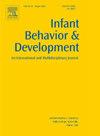Sensitivity to temporal synchrony in audiovisual speech and language development in infants with an elevated likelihood of autism: A developmental review
IF 1.9
3区 心理学
Q3 PSYCHOLOGY, DEVELOPMENTAL
引用次数: 0
Abstract
Detecting temporal synchrony in audiovisual speech in infancy is fundamental for socio-communicative development, especially for language acquisition. Autism is an early-onset and highly heritable neurodevelopmental condition often associated with language difficulties that usually extend to infants with an elevated likelihood of autism. Early susceptibilities in still unclear basic mechanisms may underlie these difficulties. Here, we discuss why sensitivity to temporal synchrony in audiovisual speech should be investigated in infants with an elevated likelihood of autism as a candidate mechanism underlying language difficulties. We then review direct and indirect eye-tracking evidence. Although scarce, some studies suggest that detection of temporal synchrony in audiovisual speech may be reduced in infant siblings (but evidence is mixed); however, this does not seem to account for language difficulties. Instead, a lack of relationship between selective attention to the articulating mouth and language development may be a plausible candidate mechanism. However, longitudinal studies tracking both sensitivity to temporal synchrony and selective attention to talking faces in the first year are needed for further clarification. Our discussion highlights gaps in the literature, future research directions and implications for domain-general approaches to the emergence of autism.
自闭症可能性高的婴儿在视听、言语和语言发展中的时间同步敏感性:一项发展综述。
检测婴幼儿视听言语的时间同步性对社会交际发展,特别是语言习得至关重要。自闭症是一种早发的、高度遗传的神经发育状况,通常与语言障碍有关,通常会延伸到自闭症可能性较高的婴儿身上。尚不清楚的基本机制的早期易感性可能是这些困难的基础。在这里,我们讨论了为什么应该在自闭症可能性较高的婴儿中研究视听语言时间同步的敏感性,作为语言困难的候选机制。然后我们回顾直接和间接的眼球追踪证据。虽然很少,但一些研究表明,在婴儿兄弟姐妹中,对视听语言时间同步的检测可能会减少(但证据是混合的);然而,这似乎并不能解释语言障碍。相反,对发音口的选择性注意与语言发展之间缺乏关系可能是一种合理的候选机制。然而,需要对第一年对时间同步的敏感性和对说话面孔的选择性注意进行纵向研究来进一步澄清。我们的讨论突出了文献中的空白,未来的研究方向和对自闭症出现的领域通用方法的影响。
本文章由计算机程序翻译,如有差异,请以英文原文为准。
求助全文
约1分钟内获得全文
求助全文
来源期刊

Infant Behavior & Development
PSYCHOLOGY, DEVELOPMENTAL-
CiteScore
4.10
自引率
4.80%
发文量
94
期刊介绍:
Infant Behavior & Development publishes empirical (fundamental and clinical), theoretical, methodological and review papers. Brief reports dealing with behavioral development during infancy (up to 3 years) will also be considered. Papers of an inter- and multidisciplinary nature, for example neuroscience, non-linear dynamics and modelling approaches, are particularly encouraged. Areas covered by the journal include cognitive development, emotional development, perception, perception-action coupling, motor development and socialisation.
 求助内容:
求助内容: 应助结果提醒方式:
应助结果提醒方式:


